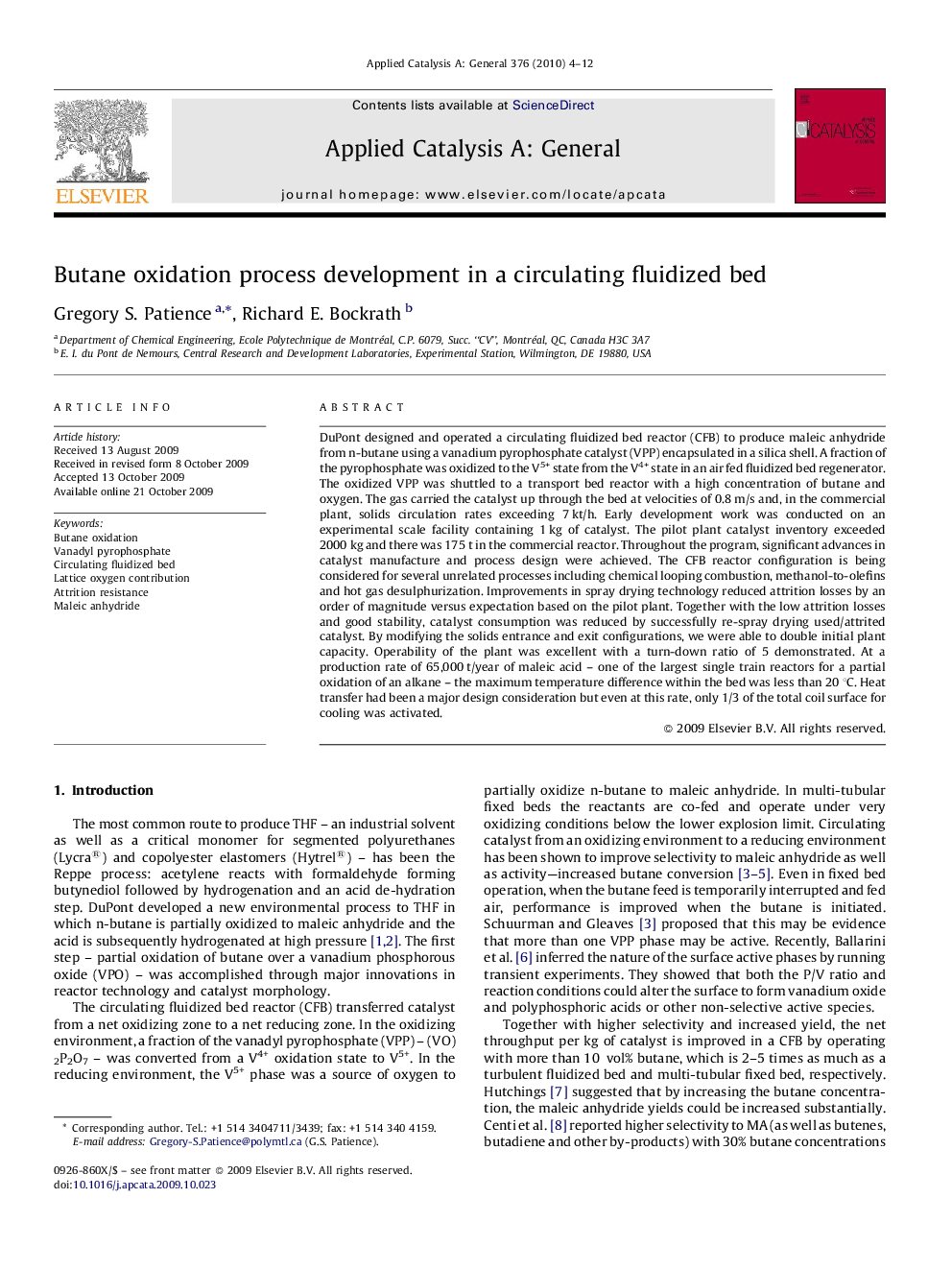| Article ID | Journal | Published Year | Pages | File Type |
|---|---|---|---|---|
| 42249 | Applied Catalysis A: General | 2010 | 9 Pages |
DuPont designed and operated a circulating fluidized bed reactor (CFB) to produce maleic anhydride from n-butane using a vanadium pyrophosphate catalyst (VPP) encapsulated in a silica shell. A fraction of the pyrophosphate was oxidized to the V5+ state from the V4+ state in an air fed fluidized bed regenerator. The oxidized VPP was shuttled to a transport bed reactor with a high concentration of butane and oxygen. The gas carried the catalyst up through the bed at velocities of 0.8 m/s and, in the commercial plant, solids circulation rates exceeding 7 kt/h. Early development work was conducted on an experimental scale facility containing 1 kg of catalyst. The pilot plant catalyst inventory exceeded 2000 kg and there was 175 t in the commercial reactor. Throughout the program, significant advances in catalyst manufacture and process design were achieved. The CFB reactor configuration is being considered for several unrelated processes including chemical looping combustion, methanol-to-olefins and hot gas desulphurization. Improvements in spray drying technology reduced attrition losses by an order of magnitude versus expectation based on the pilot plant. Together with the low attrition losses and good stability, catalyst consumption was reduced by successfully re-spray drying used/attrited catalyst. By modifying the solids entrance and exit configurations, we were able to double initial plant capacity. Operability of the plant was excellent with a turn-down ratio of 5 demonstrated. At a production rate of 65,000 t/year of maleic acid – one of the largest single train reactors for a partial oxidation of an alkane – the maximum temperature difference within the bed was less than 20 °C. Heat transfer had been a major design consideration but even at this rate, only 1/3 of the total coil surface for cooling was activated.
Graphical abstractDuPont designed and operated a circulating fluidized bed reactor to produce maleic anhydride from n-butane using a vanadium pyrophosphate catalyst encapsulated in a silica shell. Challenges overcome during the commercialization phase included: attrition resistance, heat transfer, and oxygen addition to a vessel with a high butane concentration. Maintaining the catalyst oxidized was critical to catalyst activity and maleic anhydride selectivity.Figure optionsDownload full-size imageDownload high-quality image (87 K)Download as PowerPoint slide
